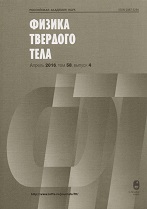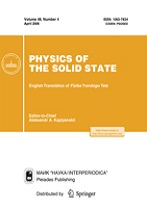|
This article is cited in 7 scientific papers (total in 7 papers)
Low dimensional systems
Synthesis of hollow carbon nanoshells and their application for supercapacitors
G. A. Rudakova, A. V. Sosunova, R. S. Ponomareva, V. K. Hennera, Gamini Sumanasekerab, Md. Shamin Rezab
a Perm State National Research University
b Department of Physics and Astronomy, University of Louisville,
Louisville, United State
Abstract:
This work is devoted to the study of the synthesis, the description of the structure, and the use of hollow carbon nanoshells 3–5 nm in size. Hollow carbon nanoshells were synthesized by thermolysis of a mixture of nickel acetate and citric acid in the temperature range of 500–700$^\circ$C. During the chemical reaction, nickel nuclei $\sim$3–5 nm in size are formed, separated from each other by carbon layers. At an annealing temperature of 600$^\circ$C, the most ordered, close-packed structure is formed, evenly distributed throughout the sample. The etching of nickel with nitric acid resulted in hollow carbon nanoshells with a high specific surface area ($\sim$1200 m$^2$/g) and a homogeneous structure. Raman spectroscopy shows that the graphene-like structure of carbon nanoshells is preserved before and after the etching of nickel, and their defect density does not increase, which enables them to be subjected to new processing (functionalization) in order to obtain additional physical properties. The resulting carbon nanoshells were used as active material of the supercapacitor electrodes. The conducted electrochemical measurements showed that the specific capacitance of the supercapacitor did not fall below 120 F/g at a current density of 0.3 to 3 A after 800 charge/discharge cycles.
Received: 11.04.2017
Citation:
G. A. Rudakov, A. V. Sosunov, R. S. Ponomarev, V. K. Henner, Gamini Sumanasekera, Md. Shamin Reza, “Synthesis of hollow carbon nanoshells and their application for supercapacitors”, Fizika Tverdogo Tela, 60:1 (2018), 165–170; Phys. Solid State, 60:1 (2018), 167–172
Linking options:
https://www.mathnet.ru/eng/ftt9343 https://www.mathnet.ru/eng/ftt/v60/i1/p165
|


| Statistics & downloads: |
| Abstract page: | 80 | | Full-text PDF : | 18 |
|





 Contact us:
Contact us: Terms of Use
Terms of Use
 Registration to the website
Registration to the website Logotypes
Logotypes









 Citation in format
Citation in format 
